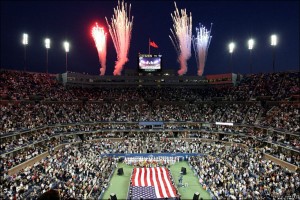Review: High Strung: Bjorn Borg, John McEnroe…by Stephen Tignor 2
Those of us who lived through the final hours of the Borg-McEnroe tennis rivalry in the early 1980s continue to embellish the mystique surrounding those epic matches relying upon imperfect memory and wish fulfillment.
This is because as the matches fade into history, our faint recollection of the events heighten the excitement of each pivotal point recalled.
Ultimately when Borg sinks to his knees on the war-ravaged lawn of Centre Court in 1980, we sink into the 3-inch shag carpeting in front of our console TVs exhilarated all over again.
There was nothing quite like their battles waged with wooden rackets during those two turbulent summers when It’s Still Rock’N’ Roll to Me, Workin’ My Way Back to You, and The Boy From New York City were topping the charts and we lip-synched and strutted along with the rest.
Author Stephen Tignor’s poignant rewind entitled High Strung––Bjorn Borg, John McEnroe, And the Untold Story of Tennis’s Fiercest Rivalry details the denouement and climax of what many consider tennis’ most memorable rivalry.
The opening salvo comes as the brash, loud American teenager meets the cooly, serene Swede on the hallowed grounds of the All England Club in the summer of 1980––where Borg was a God and McEnroe the unwelcome American interloper.
Tignor, with colorful expressive language, mimics the highly rhythmic yet repetitive lyrics of the times. He paints his collage of those days with broad vibrant strokes, detailing most often the Borg-McEnroe rivalry.









